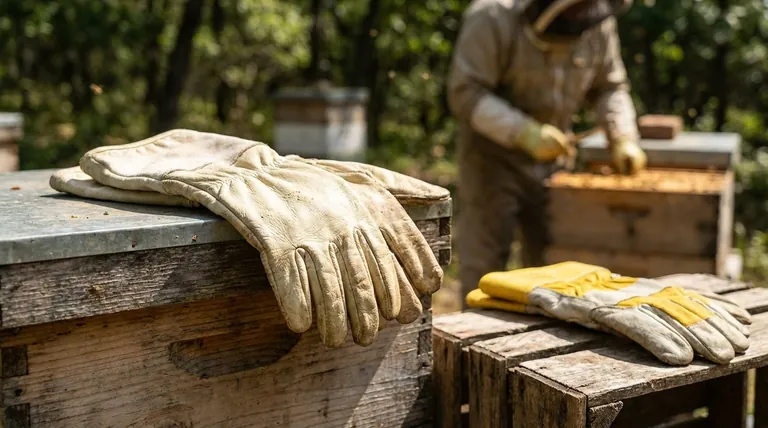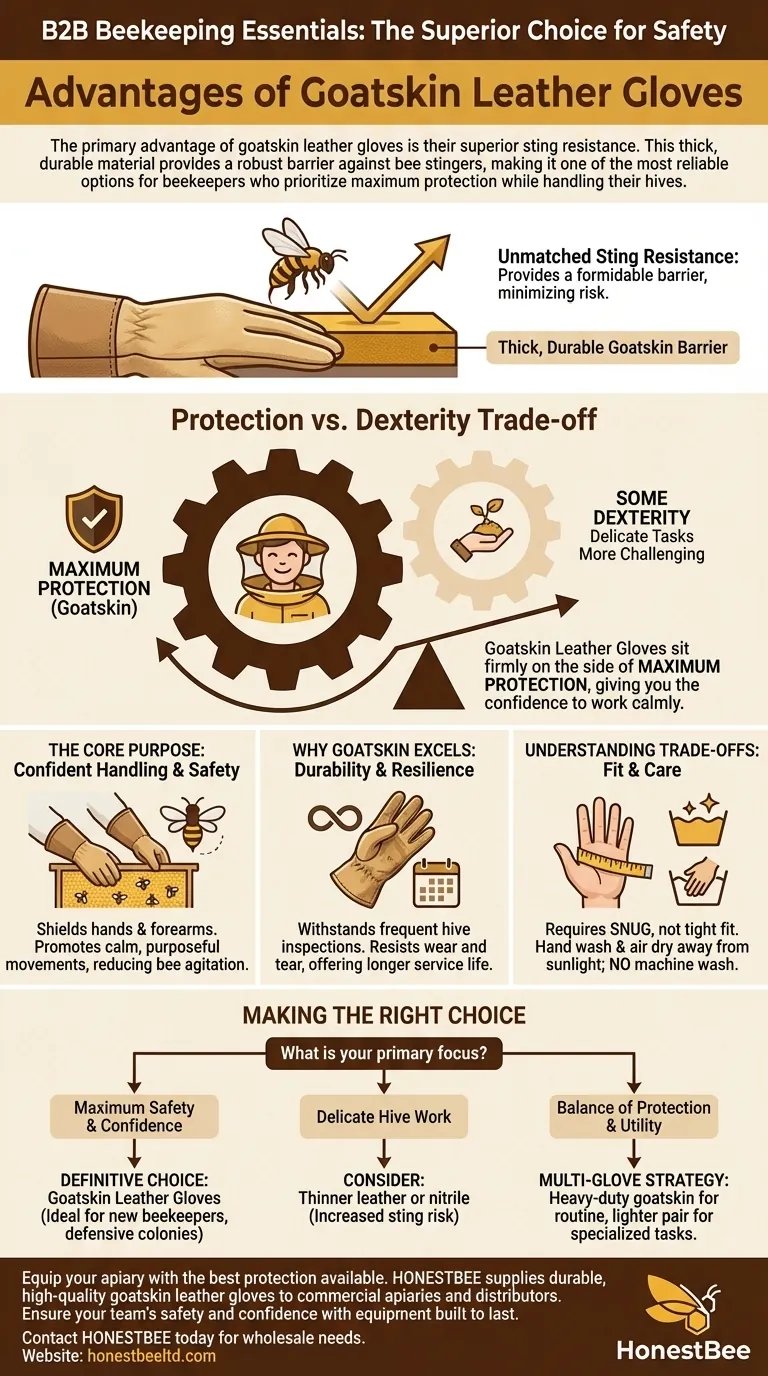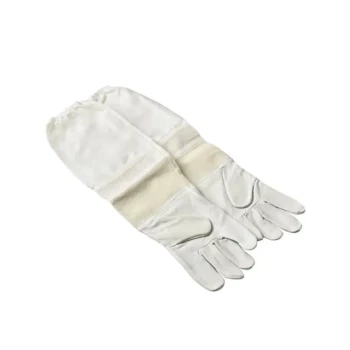The primary advantage of goatskin leather gloves is their superior sting resistance. This thick, durable material provides a robust barrier against bee stingers, making it one of the most reliable options for beekeepers who prioritize maximum protection while handling their hives.
The choice of beekeeping gloves is a fundamental trade-off between protection and dexterity. Goatskin leather sits firmly on the side of maximum protection, giving you the confidence to work calmly, at the cost of some tactile sensitivity.

The Core Purpose of Beekeeping Gloves
The right gloves are a foundational piece of safety equipment, allowing you to interact with your hives confidently and effectively.
Shielding Hands and Forearms
A glove's most basic function is to prevent stings. Beekeeping gloves are designed to shield not just the hands but also the forearms, with elastic cuffs to ensure a secure seal against inquisitive bees.
Enabling Confident Handling
When you trust your equipment, you move with more purpose and less agitation. This calm demeanor is less likely to alarm the bees, leading to a safer and more productive experience for both you and the colony.
Why Goatskin Excels in Protection
Goatskin leather is a popular choice specifically because of its material properties, which are well-suited to the demands of beekeeping.
Unmatched Sting Resistance
Goatskin is a thick and durable material. Unlike thin cotton or nitrile gloves, it provides a formidable barrier that bee stingers struggle to penetrate, minimizing your risk.
Durability for Long-Term Use
The inherent toughness of goatskin means these gloves can withstand the rigors of frequent hive inspections. They resist wear and tear better than most alternatives, offering a longer service life.
Understanding the Trade-offs
While goatskin offers best-in-class protection, it's essential to understand its limitations to make an informed decision.
The Dexterity Compromise
The same thickness that stops stings also reduces your ability to feel. Goatskin gloves prioritize protection over dexterity, which can make delicate tasks like marking a queen or manipulating small frame components more challenging.
The Importance of a Proper Fit
No matter the material, a proper fit is crucial. Gloves should be snug but not tight. A poor fit can compromise both protection and functionality, hindering your ability to work efficiently.
Specific Care Requirements
Leather gloves require special care. They should not be machine washed. Instead, they must be gently scrubbed by hand and left to air dry away from direct sunlight to prevent the material from becoming stiff or damaged.
Making the Right Choice for Your Goal
Select your gloves based on your comfort level, experience, and the specific tasks you need to perform.
- If your primary focus is maximum safety and confidence: Goatskin is the definitive choice, especially for new beekeepers or when dealing with a particularly defensive colony.
- If your primary focus is delicate hive work: You may need to consider thinner leather or nitrile gloves for tasks requiring fine motor control, accepting the increased risk of stings.
- If your primary focus is a balance of protection and utility: Many experienced beekeepers own two pairs, using heavy-duty goatskin for routine inspections and a lighter pair for specialized tasks.
Ultimately, the best beekeeping glove is the one that empowers you to work safely and confidently with your bees.
Summary Table:
| Advantage | Key Feature | Ideal For |
|---|---|---|
| Maximum Sting Protection | Thick, durable leather barrier | New beekeepers, defensive colonies |
| Long-Term Durability | Resists wear and tear from frequent use | Commercial apiaries, frequent inspections |
| Confident Handling | Enables calm, purposeful movements | All beekeepers prioritizing safety |
Equip your apiary with the best protection available. HONESTBEE supplies durable, high-quality goatskin leather gloves and other essential beekeeping supplies to commercial apiaries and distributors through our wholesale-focused operations. Ensure your team's safety and confidence with equipment built to last. Contact HONESTBEE today to discuss your wholesale needs and enhance your operation's safety.
Visual Guide

Related Products
- Beekeeping Gloves Goatskin Leather with Long Cotton Sleeve for Beekeepers
- Goat Skin Leather Bee Sting Proof Beekeeping Gloves with Canvas Sleeve
- Goatskin Leather Beekeeper Gloves with Vent Long Sleeve for Beekeeping Honey Bee Sting Proof Protection
- Mesh Ventilated 3 Layer Goatskin Beekeepers Gloves for Beekeeping
- Professional Galvanized Hive Strap with Secure Locking Buckle for Beekeeping
People Also Ask
- Should beekeepers wear gloves, and why? Essential Protection for Beekeepers
- What are the arguments for and against using gloves in beekeeping? Balancing Protection and Dexterity
- Why do some experienced beekeepers choose not to wear gloves? For Superior Dexterity & Hive Welfare
- Why is dexterity and flexibility important in beekeeping gloves? Boost Your Hive Management Efficiency
- What are the features of ventilated bee gloves? Stay Cool & Dexterous in Warm Weather



















